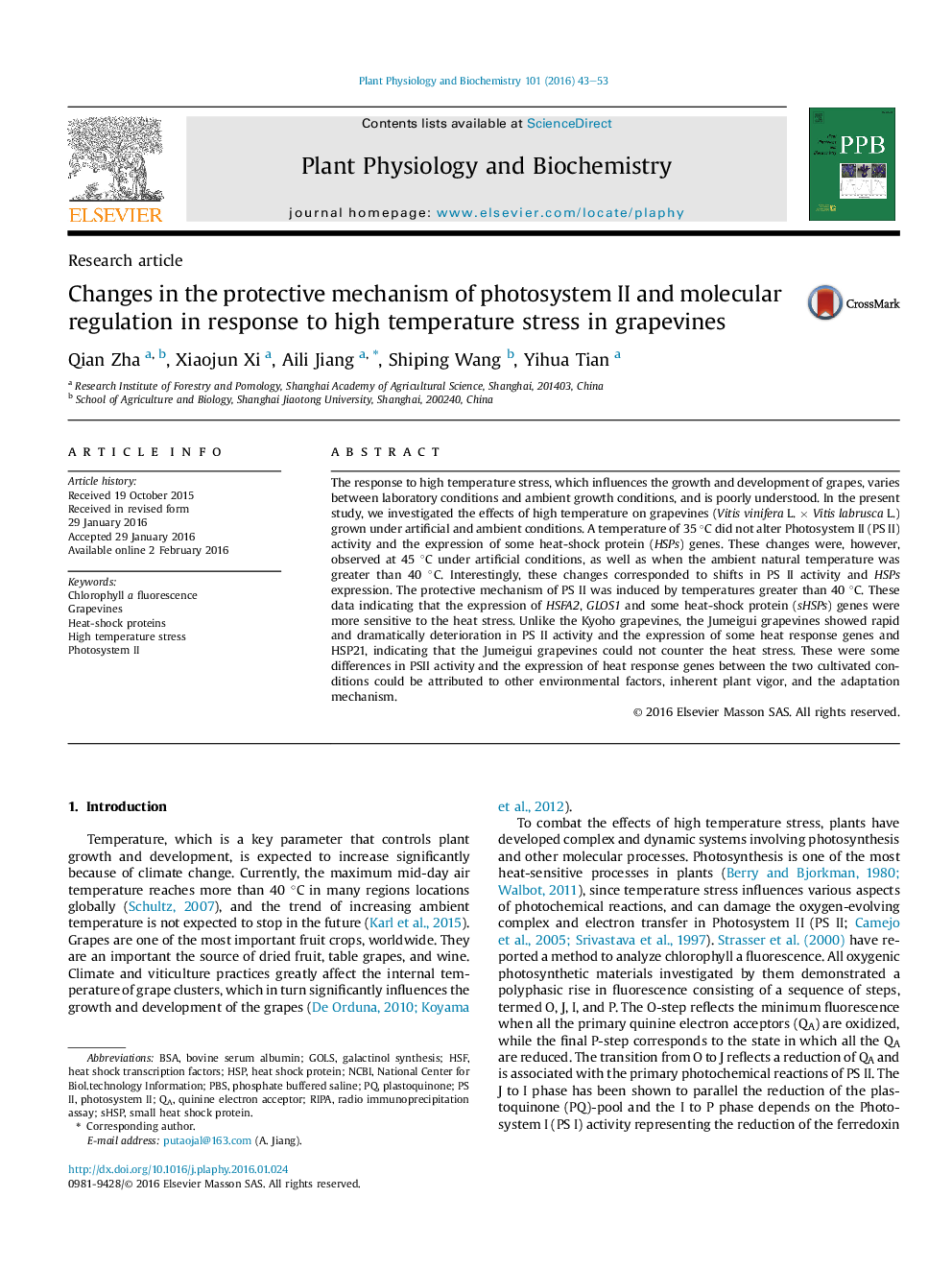| Article ID | Journal | Published Year | Pages | File Type |
|---|---|---|---|---|
| 8354101 | Plant Physiology and Biochemistry | 2016 | 11 Pages |
Abstract
The response to high temperature stress, which influences the growth and development of grapes, varies between laboratory conditions and ambient growth conditions, and is poorly understood. In the present study, we investigated the effects of high temperature on grapevines (Vitis vinifera L. Ã Vitis labrusca L.) grown under artificial and ambient conditions. A temperature of 35 °C did not alter Photosystem II (PS II) activity and the expression of some heat-shock protein (HSPs) genes. These changes were, however, observed at 45 °C under artificial conditions, as well as when the ambient natural temperature was greater than 40 °C. Interestingly, these changes corresponded to shifts in PS II activity and HSPs expression. The protective mechanism of PS II was induced by temperatures greater than 40 °C. These data indicating that the expression of HSFA2, GLOS1 and some heat-shock protein (sHSPs) genes were more sensitive to the heat stress. Unlike the Kyoho grapevines, the Jumeigui grapevines showed rapid and dramatically deterioration in PS II activity and the expression of some heat response genes and HSP21, indicating that the Jumeigui grapevines could not counter the heat stress. These were some differences in PSII activity and the expression of heat response genes between the two cultivated conditions could be attributed to other environmental factors, inherent plant vigor, and the adaptation mechanism.
Keywords
Related Topics
Life Sciences
Agricultural and Biological Sciences
Plant Science
Authors
Qian Zha, Xiaojun Xi, Aili Jiang, Shiping Wang, Yihua Tian,
